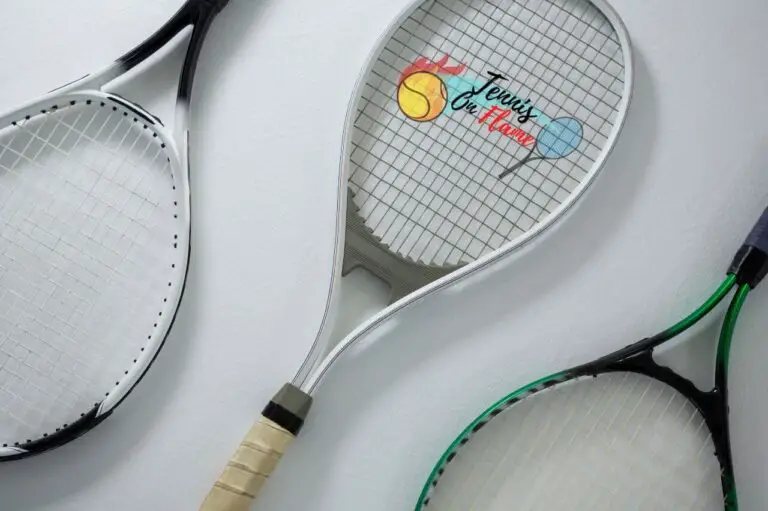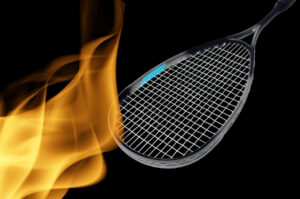Do you know when did metal tennis rackets start and come out?
Many people think they have been around forever, but that is not the case! Metal tennis rackets were not popular until the 1960s.
Learn more about this topic in our latest blog post!
Let’s get started!
When did metal tennis rackets start and come out?
Most people believe that metal rackets are a late twentieth-century invention, however, they were created earlier in the form of prototypes.
The first patented metal racket was made by René Lacoste in 1957.
Wilson then bought the rights and released their version to the public in 1969 through their catalog.”
What was the first metal tennis racket?
The Wilson T2000 steel racket was released in 1968, After tennis legend, Jimmy Connors began using it, the racket soon reached legendary status.

When was the last time there was a wood racket used in Wimbledon?
The answer is 1984. That year, John McEnroe played with a Dunlop Maxply against Jimmy Connors who was using a T2000 metal trampoline.
This marked the end of an era for wooden rackets at Wimbledon; from then on, all professional players began using metal rackets as they became more popular and more powerful.
Metal rackets allowed for more spin and control than wooden ones, and thus the way we play tennis today was born!
Thanks to metal rackets, our favorite players have been able to take their game to new heights. So next time you hit the courts, give a nod of appreciation for the humble metal racket!
Who was the last tennis player to win a Grand Slam using a wooden racquet?
Yannick Noah was the last player to win a Grand Slam tournament (the 1983 French Open) using a wooden racquet.
He went on to become one of the most successful male players in French tennis history, winning 23 singles titles and 16 doubles titles.
Noah’s Highest ranking was No. 3 (achieved on 7 July 1986).
He Retired in 1996.
What was the main disadvantage of the Wilson T200 metal tennis racket?
The main disadvantage was that the Wilson T200 metal tennis racket was notoriously risky to string because the strings were constantly whipping off and hurting players.
So, when graphite came along, it was a major improvement in terms of stringing too.
What is the main advantage of using a metal tennis racket?
The main advantage of using a metal tennis racket is that Metal rackets are more powerful and less prone to warping, meaning you can use the same racket for an extended period without it losing its shape.
They also provide more control and spin, allowing you to create much more effective shots.
Metal rackets are also stiffer than other racket materials, so manufacturers began to make larger head sizes.
Finally, metal rackets are generally lighter than wooden ones, which makes them easier to maneuver during matches.
The right racket can make a huge difference in your game – so don’t be afraid to test out different metals and brands until you find the perfect fit!
How have tennis racket materials changed over the years?
The materials used to make tennis rackets have changed over the years, from wood, and metal to composite materials.
Initially, wooden racquets were used by players until steel racket frames came into play in the late 1957s. Aluminum was then introduced in 1968, followed by carbon fiber composites in the 1980s.
Graphite composite materials like carbon fiber, fiberglass, ceramics, or metals including titanium alloys have now become the most popular type of tennis racket frame material.
Are wooden tennis rackets still made?
As of now, Grays is the only known manufacturer of active wooden racquets.
Grays was founded in 1855 by H. J. Gray, world Rackets champion, in Cambridge. For over 160 years now, Grays has been hand-crafting high-quality wooden racquets there.
In conclusion
Tennis rackets have evolved over the years, from wood to metal and now composite materials like carbon fiber, fiberglass, ceramics, or metals including titanium alloys.
The Wilson T2000 steel racket was released in 1968 and changed the game forever.
While wooden rackets are still available through Grays in England, metal rackets have become the standard for professional players and casual players alike.
Metal rackets are not only more powerful and durable but also provide more control and spin than wooden rackets, making them a great choice for anyone looking to take their game to the next level.
So grab your metal racket and get ready to hit some balls!
We hope you enjoyed learning about: when did metal rackets start.
Do you have any questions or comments about the metal tennis rackets? Let me know in the comments below, and I will be happy to answer you!
And be sure to check out my other blog posts for more informative guides.
Thanks for reading, and have a nice day! 🙂








